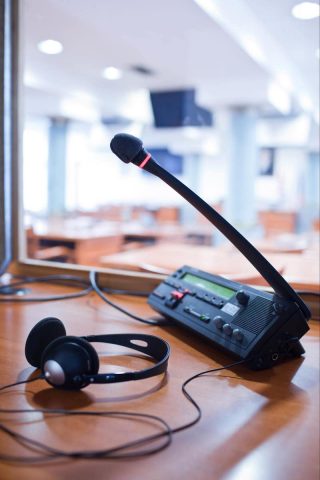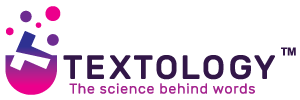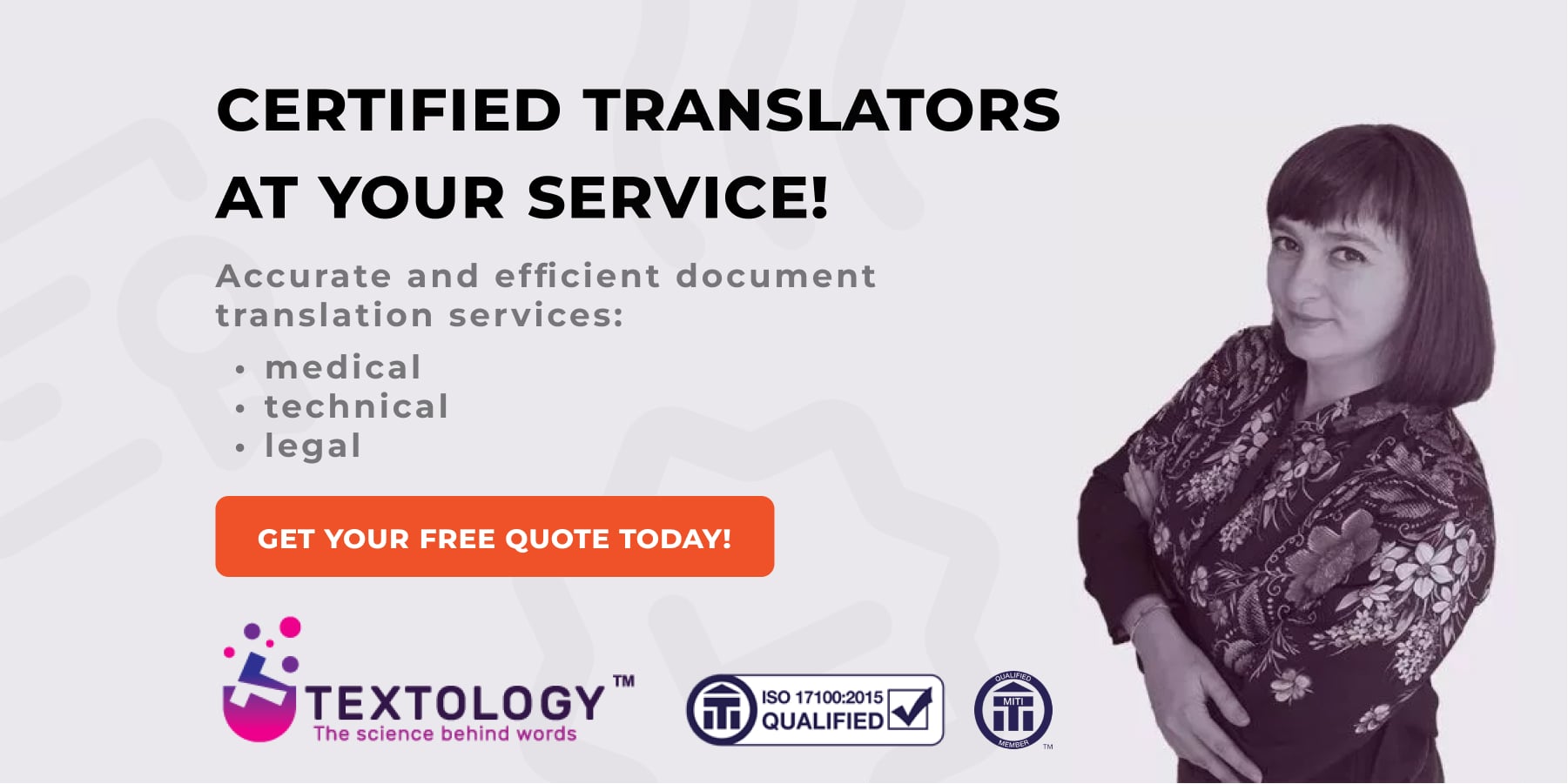
Although at first glance they might seem the same or very similar (some languages and people not connected to the language services industry even use these terms interchangeably), translation and interpretation are in fact two different processes. That of course doesn’t mean there aren’t any similarities between them. Let’s take a closer look and clear up the ambiguities.
What is translation?
Despite its dictionary definition sounding a bit complicated (especially for a foreigner), the essence of translation can be summed up in one sentence. Simply put, translation is a transfer of written word from source language to target language (or several of them) that conveys the original text’s meaning.
The work of a translator often includes proofreading the written work of others, especially when it involves important documentation.
Types of translation
Depending on the nature of a given text, translation can take one of these specialized forms:
- Technical translation – used for texts that include tech jargon or specified instructions that must be conveyed faithfully. You can read more about translation steps in our dedicated post. Applies to: technical standards, manuals, patents, booklets, guides etc.
- Financial translation – mainly deals with international financial documents that require exact representation of numbers (for example, the word ‘billion’, but with one ‘l’, in Polish is equivalent to US English ‘trillion’). Applies to: bank records, auditor’s reports, invoices, annual financial reports etc.
- Marketing translation -used whenever there’s need for creative language thoroughly adopted to the target audience. Applies to: slogans, brochures, social media communication, leaflets, product presentations etc.
- Literary translation – helps in conveying the original author’s literary style and proper transference of text’s emotions, humour, feelings and cultural nuances. Applies to: poems, verses, plays, novels, stories etc.
- Medical translation – for texts that include medical terms, which requires clear and accurate transfer from one language to another while being compliant with the target country’s legislation. Applies to: clinical trials, manuals for medical equipment, medicine leaflets, medical reports etc.
- Legal translation – for sensitive documents that deal with business and legal interactions, which require the use of specific style and terminology. Applies to: employment documents, business agreements, contracts etc.
- Certified translation – required for any government issued documents or those submitted to governmental institutions or courts. Applies to: birth and death certificates, court evidence, witnesses’ testimonies, diplomas, wills and testaments, adoption agreements etc.
- Software/website localization – focuses more on the target country than the language itself, as the texts should be adapted to the local conventions while maintaining the same length limit. Applies to: user guides, software, websites, mobile apps etc.
What is interpretation?
Simply put, it’s the oral reproduction of spoken language. So interpreters work with spoken word rather than written text and focus more on paraphrasing content, instead of conveying it in an exact manner. Although professional translators should never translate everything word-for-word either, as it will leave out some parts of the implied meaning.
Interpreting might seem easier at first, but most of the time it’s done in real time (e.g., in the middle of a conversation), which makes it easy to stumble and leave chunks of the content out while trying to keep up with the flow.
Types of interpretation
There are two main types of interpretations:
- Consecutive interpretation (a.k.a. gradual interpretation) – content is interpreted from one language into another in parts or single sentences. Applies to: seminars, presentations, audits, business meetings and lectures.
- Simultaneous interpretation (a.k.a. live interpretation) – spoken words are interpreted almost without delay (the interpreter listens to the speaker and speaks himself at the same time) and this method requires specialized equipment. Applies to: state visits, conferences, public lectures, training sessions and conferences.

What’s the difference between translation and interpretation?
We’ve already covered the key and most obvious one – working material – so let’s take a deeper dive into the matter. Here are the most important characteristics that differentiate interpretation and translation:
- Language skills – translators and interpreters need distinct language skills. Translation requires deeper technical knowledge of grammar and stylistic structures, as well as the ability to play with words, so that the translated text will affect the readers in the intended way. On the other hand, interpretation focuses more on proper articulation and fluent use of spoken language, as there’s no room for hesitation.
- Personality traits – some personality traits are preferable for an interpreter to have, while others are more suited for translation work. Interpretation benefits greatly from the ability to multitask/work under pressure and excellent communication skills. Being a good listener also helps a lot. In translation, a patient, analytical and detail-oriented mind would be a perfect match for the job, while a pinch of perfectionism would help in constantly upping the quality of produced translations.
- Working tools – while translating, translators work with specialized software like CAT tools, text editors or translation memories to speed up the process and polish the final results. Interpreters don’t have such “luxuries” – they work mostly with their own minds and must rely solely on their own skills.
Translation and interpretation – Similarities
When it comes to common characteristics, both processes require in-depth knowledge of both source and target language – without it there’s no chance for successful transfer of the original message. Both interpreters and translators base their work on the use of reference materials – be it texts (e.g., dictionaries) or live dialog. Moreover, both can be used in conjunction with transcription services and each other when there are three languages involved (e.g., by simultaneous interpreting the evidence audio for the transcript and then translating this transcript into another, witness’s native language). And, last but not least, they share the same goal of pushing the message through the language barrier.
How to ensure the high quality of translations and interpretations?
To ensure the best possible accuracy and quality of rewrite/oral rendition of content in a language foreign to you, the best place to look for professional interpreting and translation services would be a reputable translation agency. One of those is TEXTOLOGY – a London-based translation company that employs native-speaking language experts who provide a wide variety of language services.

